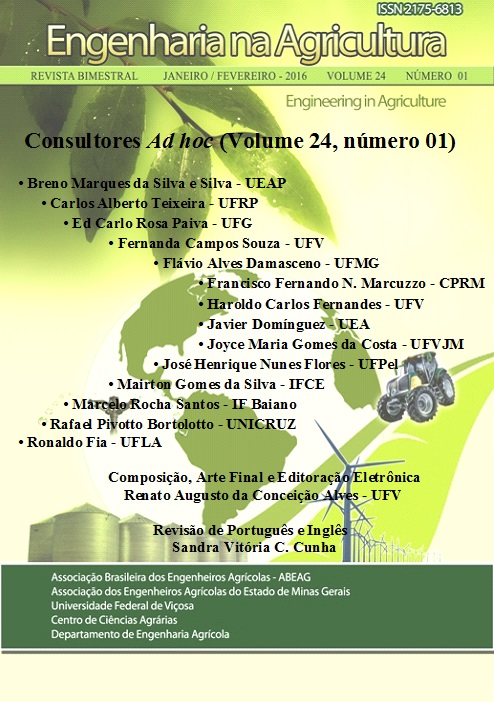MECHANISED HARVEST OF ENERGY WOOD: STATE-OF-THE-ART AND NEW DEVELOPMENTS
DOI:
https://doi.org/10.13083/reveng.v24i1.638Palavras-chave:
Short rotation coppice, harvesting, wood chip, poplar, willow, eucalyptusResumo
Energy wood from fast growing trees, also called short rotation coppice (SRC) such as poplar, willow and eucalyptus, may provide a secure source of income for farmers, provided that production technologies, logistic chains and end user facilities are well designed in farmers’ regional structures. One of the key problems at present is the lack of inexpensive harvesting machinery. Analyzing the process chain of fast growing trees, chip lines seem to be most costefficient for harvest, and the modification of forage harvesters is a promising option. But the high machine weight of forage harvesters is a serious disadvantage for harvest in rain-laden or mountainous regions. Furthermore, for economic operation of these expensive harvest systems cultivation areas of more than 300 ha are required. Therefore, a simple and low weight tractor-mounted mower-chipper for medium sized standard tractors has been developed. The chipper is designed for flexible harvest of wood from fast growing trees (max. stem diameter 15 cm). The total weight of the harvester (tractor and chipper) is less than 50 % of the forage harvester combination resulting in much more flexible field operation and lower harvest costs. The machine has been successfully tested in the last three harvest seasons on an area of more than 110 ha. At harvest of 4 years old poplars (10 - 15 cm stem diameter) an average field performance of 0.5 ha h-1 has been realized. Due to the robust design and performance of the prototype the development of a reinforced model is considered at present. Such a new model could be designed for harvest of poplar or eucalyptus trees with stem diameters of more than 20 cm.Downloads
Downloads
Publicado
Como Citar
Edição
Seção
Licença
Autores que publicam nesta revista concordam com os seguintes termos:
O(s) autor(es) autoriza(m) a publicação do texto na da revista;
O(s) autor(es) garantem que a contribuição é original e inédita e que não está em processo de avaliação em outra(s) revista(s);
A revista não se responsabiliza pelas opiniões, ideias e conceitos emitidos nos textos, por serem de inteira responsabilidade de seu(s) autor(es);
É reservado aos editores o direito de proceder a ajustes textuais e de adequação às normas da publicação.
A partir da submissão, o autor estará cedendo integralmente seus direitos patrimoniais da obra à publicação, permanecendo detentor de seus direitos morais (autoria e identificação na obra) e de acordo com a Licença Creative Commons, CC BY-NC.








 Esta obra está licenciada com uma Licença
Esta obra está licenciada com uma Licença 